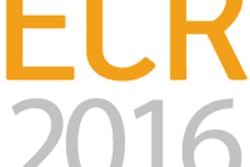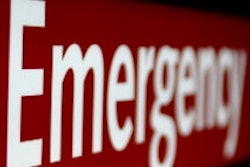Tube current modulation can substantially reduce the radiation dose of so-called triple rule-out scans, an increasingly popular test for patients presenting with chest pain and suspected acute coronary syndromes (ACS). Researchers from Thomas Jefferson University in Philadelphia found they could lower the dose for the extended coronary CT angiography (CTA) scan by more than 50% for patients whose heart rates can be slowed to less than 65 bpm.
Triple rule-out coronary CTA offers doctors a reliable way to detect the most life-threatening illnesses of the upper thorax, detecting most coronary artery diseases, pulmonary embolisms, and aortic dissections in a single pass. But the accompanying radiation doses -- as high as 40 mSv for a retrospectively gated scan -- have raised flags about cancer risk, particularly among younger women, who have a higher estimated lifetime risk of developing cancer as a result of radiation exposure from medical imaging.
Because imaging protocols have very different effects on radiation dose, comparing different scan acquisition strategies is critical, wrote Dr. Kevin Takakuwa and colleagues in the April issue of the American Journal of Roentgenology.
Their study aimed to evaluate the effective radiation dose of the triple rule-out test with and without the use of tube current modulation, and to evaluate how radiation dose is affected by the patient's age, sex, and body mass index (BMI).
The study did not employ the so-called step-and-shoot (prospectively gated) image acquisition, another important dose-reduction tool whose principal limitation is that it does not permit a functional examination of the heart. Incorporating the technique could potentially reduce the dose at least as much as the use of tube current modulation.
But the authors said theirs was the first study to combine phantom information with patient-specific information affecting radiation dose in 267 low- to moderate-risk patients (age 21-86 years, mean age 48.7 ± 11) presenting to the emergency department with suspected acute coronary syndrome (AJR, April 2009, Vol. 192:4, pp. 866-872).
The team retrospectively analyzed triple rule-out coronary CTA exams performed on a 64-detector-row CT scanner (Brilliance Pro, Philips Healthcare, Andover, MA).
"Tube current modulation was generally used in patients with heart rates below 65 beats per minute during the second half of the study period as a way to reduce radiation exposure," the researchers wrote. Tube current was used in 95 of 267 (36%) patients who had a lower mean heart rate (59.0 ± 6.9 bpm; 95% CI, 57.6-60.4) than patients who did not receive tube current modulation (67.6 ± 11.8 bpm; 95% CI, 65.9-69.4; p < 0.0001).
A biphasic injection technique was used, with 70 mL of ioversol injected at 5 mL/sec, followed by a 50/50 mixture of contrast and saline. Scanning was initiated seconds after the contrast bolus reached the left atrium.
Scan parameters included 120 kVp at 600 mAs, rising to 1,050 mAs per slice and 140 kVp for patients weighing more than 200 lb, they wrote. The readers graded each major coronary artery, in addition to visible obtuse marginal and diagonal branches, for stenosis. A single experienced radiologist evaluated cardiac motion and ejection fraction in standard echocardiographic views, reporting any segmental wall motion abnormalities.
The results showed dramatically lower radiation with the use of tube current modulation. For the 172 patients evaluated without tube current modulation, effective dose averaged (± SD) 18.0 ± 5.6 mSv (range, 9.9-31.3 mSv). Among the 95 patients who underwent CTA with tube current modulation, effective dose was significantly lower at 8.75 ± 2.64 mSv (range, 5.4-16.6 mSv; p < 0.0001), the group reported.
"Obese patients received significantly more radiation than overweight and normal-weight patients in the nontube current modulation groups (20.9 mSv versus 15.0 and 14.9 mSv, respectively; p < 0.0001) and in the tube current modulation groups (10.3 mSv versus 7.6 and 7.1 mSv, p < 0.0001)," the authors wrote. "Tube current modulation decreased radiation exposure by at least half."
When the triple rule-out protocol was combined with tube current modulation, the dose for obese patients (BMI > 30) dropped to 10.3 ± 2.8 mSv, compared to 7.6 ± 1.9 mSv (p < 0.01) in overweight patients (BMI 25 to 29.9) and 7.1 ± 0.7 mSv (p < 0.005) in normal-weight patients (BMI < 25).
Among the scans that did not use tube current modulation, women received less radiation than men (17.0 versus 19.5 mSv, respectively; p < 0.001).
The researchers found no reduction in image quality associated with tube current modulation. The reader subjectively rated the mean image quality score at 4.2 in studies with tube current modulation (range, 2-5) versus 3.6 in studies without tube current modulation (range, 1-5). The score was significantly better in patients imaged with tube current modulation (p < 0.0001).
"The results of this study showed that using tube current modulation significantly reduced radiation exposure in patients by age, sex, and BMI who had regular, slow heart rates without subjective loss of image quality," Takakuwa and colleagues wrote. "In fact, image quality was superior in patients imaged with tube current modulation; this finding is likely related to the slower heart rates in this group."
While the scanning of young patients, especially women, has been a concern among investigators, the demographics of the exam suggest that few young women with signs or symptoms of acute coronary sydnrome are undergoing triple rule-out scanning protocols, they added.
"Most of our patients were middle-aged, from 41 to 59 years old," the group wrote. "Only six of 267 patients (2.2%) were women in their 20s and 19 of 267 patients (7.1%) were women in their 30s. Clearly, we need to carefully weigh the risks and benefits of each diagnostic triple scan based on the clinical setting and with respect to patient age and sex."
Cancer risk estimates cited in previous research have been derived not from patient studies but from epidemiologic studies of the Japanese atomic bomb survivors using extrapolation from relatively high doses to the lower effective doses delivered by coronary CTA, they added.
Radiation doses must also be considered in the context of alternative exams, the authors wrote. The effective dose of the triple rule-out protocol with tube current modulation is less than that of a nuclear stress evaluation, and the combined results from ventilation/perfusion (V/Q) scanning and a nuclear stress test would fail to diagnose most noncoronary causes of chest pain that might be detected with a triple rule-out study, they stated.
"In fairness, patients who have a triple rule-out CTA evaluation that shows moderate coronary artery stenosis may need further stress testing to determine whether cardiac catheterization is needed, which could lead to increased radiation," Takakuwa and colleagues wrote. "However, a triage strategy in which patients with < 50% stenosis are discharged without further cardiac testing can be used to avoid additional cardiac diagnostic testing in approximately 90% of low- to moderate-risk patients with suspected ACS."
More can be done to reduce the radiation dose. For example, the use of a step-and-shoot axial acquisition technique, rather than the helical scan used in the study, is likely to reduce radiation even more than what was achieved with the use of tube current modulation, they noted. However, step and shoot does not allow the evaluation of ventricular wall motion.
One patient in a previous study with a significant stenosis would have been misclassified as having mild stenosis if not for the segmental wall motion abnormality found on coronary CTA, they noted.
"For those patients evaluated with step-and-shoot imaging to reduce radiation dose, the addition of an echocardiogram to evaluate wall motion should be considered," Takakuwa and colleagues wrote.
By Eric Barnes
AuntMinnie.com staff writer
April 15, 2009
Related Reading
CT protocols reduce risk for pulmonary embolism, March 9, 2009
320-detector-row CT cuts dose in triple rule-out exams, February 12, 2009
Dual-energy CT helps distinguish PE from other perfusion defects, December 2, 2008
MDCT for chest pain: Whom to scan, when to discharge, August 22, 2008
Multislice CT plus D-dimer testing sufficient for excluding pulmonary embolism, April 21, 2008
Copyright © 2009 AuntMinnie.com



















